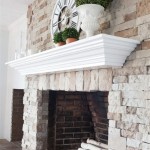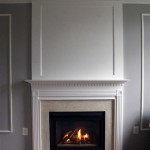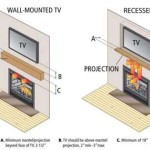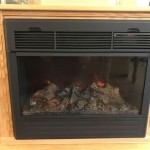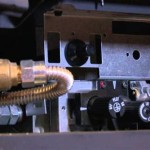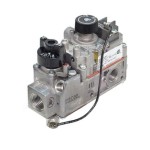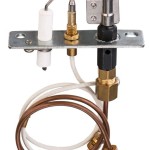Is It Expensive To Convert a Wood-Burning Fireplace to Gas?
Converting a wood-burning fireplace to gas offers increased convenience and often improved efficiency. However, a key factor influencing the decision to undertake such a conversion is the associated cost. The expense involved can vary significantly based on numerous elements, making a precise estimate challenging without a thorough assessment of the specific situation.
This article will delve into the various cost factors associated with converting a wood-burning fireplace to gas, providing a comprehensive overview to help determine if the expense aligns with budgetary constraints and desired benefits.
Factors Influencing the Cost of Conversion
Several elements contribute to the overall cost of converting a wood-burning fireplace to gas. These factors range from the type of gas appliance selected to the complexities of the installation process.
Gas Line Installation: One of the most significant cost drivers is the installation of a gas line to the fireplace. If a gas line is already present near the fireplace, the expense will be notably lower. However, if a new gas line needs to be run from the main gas meter to the fireplace, the cost can escalate considerably. The distance, accessibility, and terrain between the gas meter and the fireplace all play a role. For instance, trenching through concrete or navigating difficult landscaping will increase labor costs. Obtaining the necessary permits for gas line installation is also crucial and contributes to the overall expense.
Type of Gas Appliance: The choice of gas appliance, whether it's a gas log set, a gas insert, or a direct vent fireplace, significantly impacts the overall cost. Gas log sets are generally the least expensive option, offering primarily aesthetic appeal with limited heating efficiency. Gas inserts, on the other hand, are more expensive but provide significantly better heating performance and are designed to fit directly into the existing fireplace opening. Direct vent fireplaces offer the highest efficiency and venting flexibility but typically require more extensive installation work and are the most costly option.
Venting Requirements: Wood-burning fireplaces and gas appliances have different venting needs. Converting to gas often necessitates modifications to the existing chimney or the installation of a new venting system. Gas log sets might be able to utilize the existing chimney with proper inspection and cleaning. Gas inserts typically require a flexible liner to be installed within the chimney. Direct vent fireplaces, as the name suggests, vent directly through an exterior wall, potentially bypassing the existing chimney altogether. The complexity and cost of venting depend on the chosen gas appliance and the condition of the existing chimney.
Permitting and Inspections: Local building codes mandate permits and inspections for gas line installations and fireplace conversions. The cost of these permits varies by municipality. Inspections are necessary to ensure the installation meets safety standards and complies with local regulations. Failure to obtain the required permits can result in fines and potential rework, adding to the overall expense.
Labor Costs: Hiring qualified professionals, such as a licensed plumber or gas fitter, is essential for a safe and compliant conversion. Labor costs vary depending on the complexity of the job, the location, and the contractor's rates. Multiple professionals may be required, including a plumber for gas line installation, a fireplace installer for the appliance, and an inspector to verify compliance. It’s prudent to obtain multiple quotes from different contractors to compare pricing and ensure a competitive rate.
Additional Features and Upgrades: The inclusion of extra features and upgrades can further increase the cost. These might include a remote control, a thermostat, decorative accessories, or enhancements to the fireplace surround. While these additions can enhance the aesthetic appeal and functionality of the converted fireplace, they contribute to the overall investment.
Estimating the Cost Range
Given the wide range of influencing factors, providing a precise cost estimate without a site-specific assessment is not feasible. However, it is possible to offer a general idea of the potential cost range, acknowledging that actual expenses may fall outside these parameters.
Gas Log Sets: Converting to a gas log set is typically the most affordable option. The cost of the log set itself can range from a few hundred dollars to over a thousand, depending on the size, style, and features. Installation costs can vary, but if a gas line is already present, the installation might only involve connecting the log set and ensuring proper venting. The overall cost, including the log set and installation, could range from $500 to $2,000 or more.
Gas Inserts: Gas inserts represent a mid-range price point, offering a balance of heating efficiency and aesthetic appeal. The cost of a gas insert can range from $2,000 to $5,000 or more, depending on the features, BTU output, and brand. Installation costs are generally higher than gas log sets due to the need for a flexible liner, gas line connections, and proper sealing. The overall cost, including the insert and installation, could range from $3,500 to $8,000 or more.
Direct Vent Fireplaces: Direct vent fireplaces typically command the highest price tag. The cost of the fireplace itself can range from $3,000 to $10,000 or more, depending on the size, design, and features. Installation is more complex, often involving running a vent directly through an exterior wall and requiring professional framing and finishing. The overall cost, including the fireplace and installation, could range from $5,000 to $15,000 or more.
These cost ranges are approximate and should be considered as general guidelines. It is crucial to obtain detailed quotes from qualified professionals to receive an accurate estimate based on the specific requirements of the project.
Strategies to Potentially Reduce Costs
While converting a wood-burning fireplace to gas represents a significant investment, several strategies can be explored to potentially reduce costs without compromising safety or quality.
Obtain Multiple Quotes: Securing quotes from multiple contractors is essential for comparing pricing and ensuring a competitive rate. Detailed quotes should outline all aspects of the project, including materials, labor, permits, and inspections. This comparison allows for informed decision-making and helps identify potential cost savings.
Consider a Gas Log Set: If heating efficiency is not the primary concern, a gas log set offers a more affordable alternative to gas inserts or direct vent fireplaces. While gas log sets provide less heat, they can enhance the ambiance of the fireplace and offer a visually appealing flame.
Perform Some Preparatory Work: Depending on skills and comfort level, certain preparatory tasks, such as removing the existing fireplace surround or cleaning the firebox, can potentially reduce labor costs. However, it's crucial to ensure that any preparatory work is performed safely and does not compromise the structural integrity of the fireplace.
Explore Financing Options: Some contractors offer financing options to help spread the cost of the conversion over time. Additionally, energy-efficiency upgrades may qualify for rebates or tax credits, further offsetting the overall expense. Researching available financial assistance programs can help alleviate the financial burden of the project.
Plan During Off-Peak Season: Fireplace installation companies may offer discounts during the off-peak season (typically spring and summer) due to lower demand. Scheduling the conversion during these months could potentially result in cost savings.
Careful Selection of Features: Choosing a gas appliance with only the necessary features can help control costs. While advanced features like remote controls or thermostats can enhance convenience, they also contribute to the overall expense. Prioritizing essential features over optional ones can help manage the budget.
In summary, determining the cost of converting a wood-burning fireplace to gas requires careful consideration of various factors, including gas line installation, the type of gas appliance, venting requirements, permitting, labor costs, and additional features. Obtaining multiple quotes, exploring cost-saving strategies, and carefully planning the project can help manage expenses and ensure a successful conversion.

Can You Convert A Gas Fireplace To Wood Burning Stove Direct Stoves Resources

Converting A Fireplace To Wood Burning Stove Chesneys
Converting A Wood Burning Fireplace Into Gas Heat Glo

What S The Cost To Convert A Wood Fireplace Gas Orange County Register

Converting A Fireplace To Wood Burning Stove Chesneys

Wood Fireplaces Gas Conversion That Counts

Want To Convert Gas Wood Fireplace Full Service Chimney
Can I Convert My Wood Burning Fireplace To Gas Woodlanddirect Com

Can A Wood Burning Fireplace Be Converted To Gas The Flame Company
Can I Convert My Wood Burning Fireplace To Gas Woodlanddirect Com

